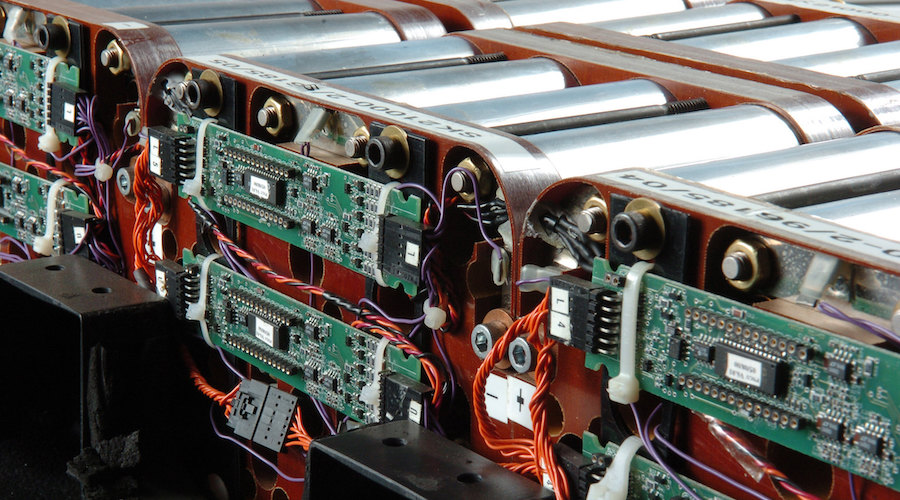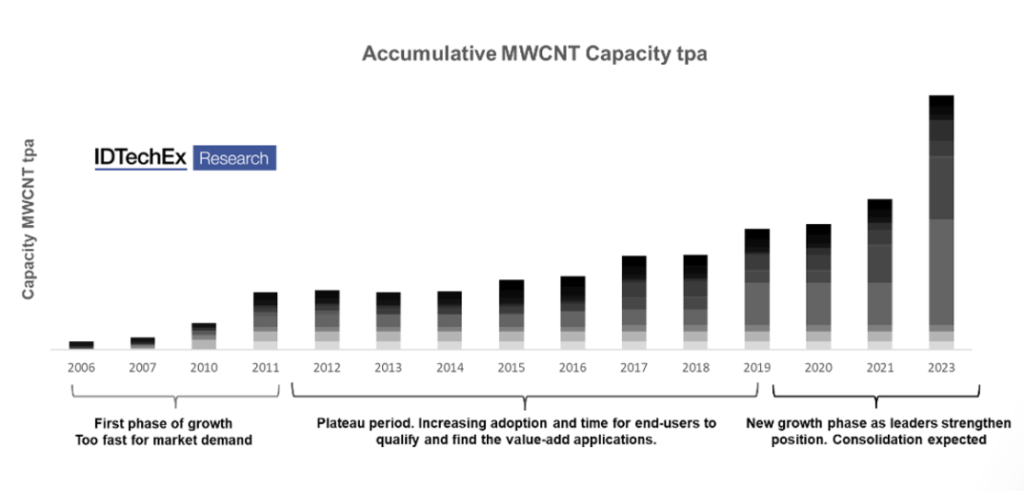
The carbon nanotube (CNT) battery market is expected to exceed 70 kilo-tonnes per annum by 2032, far outstripping current capacity, which will need to be scaled accordingly, according toa new report by IDTechEx.
Carbon nanotubes are graphene’s older sibling and are materials that have a unique one-dimensional tubular structure, high electrical and thermal conductivities, and extremely large surface area, thus, they are considered promising candidates as anode materials for lithium-ion batteries.
Within the CNT category exists the sub-category of multi-walled carbon nanotubes (MWCNTs), a special form of carbon nanotubes in which multiple single-walled carbon nanotubes are nested inside one another. According to IDTechEx, the upcoming success of CNTs is attributed to the use of MWCNTs as a conductive additive in the cathode for lithium-ion batteries.
“This is introduced as a slurry with other additives, the amount of loading depending on the active material, and price-performance considerations,” the report reads. “The nanotubes are used for their excellent conductive and mechanical properties with an advantageous 1D morphology. There are numerous advantages including the potential to use thicker electrodes, operate at higher C-rates, and many more.”

When it comes to companies involved in the production of CNTs, the market analyst points out that the largest one, China’s Cnano, already has numerous ties to battery manufacturers, particularly in its homeland. LG Chem, on the other hand, is scaling production for both LG Energy Solution and beyond, while Cabot Corporation acquired SUSN citing the role of CNTs in battery applications, and Toyocolor announced in 2021 that they will supply to SK Innovation.
“Then there is the opportunity beyond MWCNTs in the cathode,” the dossier states. “Single-walled carbon nanotubes continue to explore the energy storage space with the likes of OCSiAl, particularly with the new 2021 investor Daikin Industries, Zeon Corporation, and Zeta Energy making announcements here. There are also hybrid products, such as CB-CNT developments by Birla Carbon and CHASM Advanced materials, making progress in anode improvements.”
For IDTechEx, it cannot be overstated that the energy storage landscape is still rapidly evolving and that before this generation of lithium-ion batteries has reached maturity, new generations and disruptive technologies will likely appear on the horizon.
“This ranges from the short-to-mid-term upcoming adoption of silicon anodes, the expected longer-term successes in solid-state batteries, and the likes of Li-S and Li-air still needing a stepwise improvement. Then there is beyond lithium-ion, e.g. Na-ion, and into supercapacitors,” the report reads.